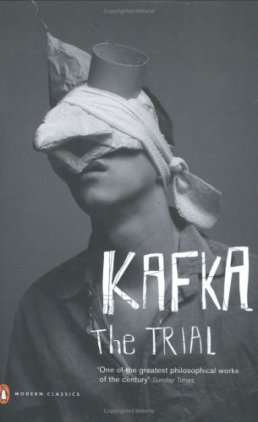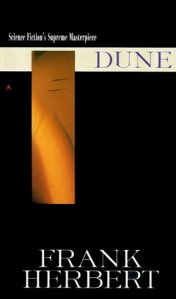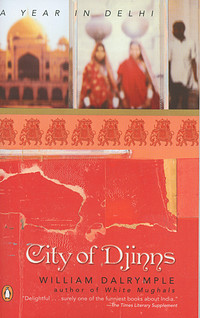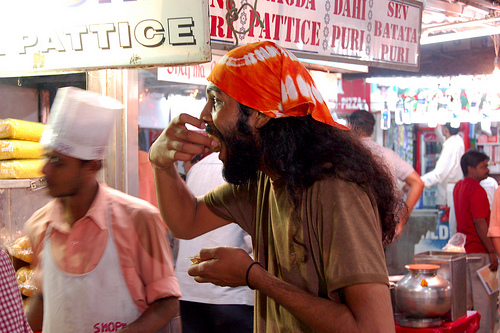Frequently, I’m asked to recommend books to other readers based on their reading preferences. I don’t do it, but I could easily point them in the direction of a definitive list, and ask them to just pick a title. I’m sure you’ve seen one of these “best-of” book lists before. The Internet abounds with hundreds of them: Modern Library’s 100 best novels, Guardian’s self-proclaimed definitive list, BBC’s top 100 read-before-you-die books and Time Magazine’s top 100. A lot of big guys defining what’s considered the best in literature. My reaction to most of these is quite blasé: “So what? It’s yet another Anglocentric book list.” Most of the time, I can count on one hand the number of literary tomes from the non-Western canon, and it simply does not sit with me. To summarise: in an average list of 100 books, Murakami represents the best of Japanese literature; Rushdie represents South Asia; Khaled Hosseini for the Middle East; Marquez (if he’s mentioned at all !holy shit!) for South America; and 90 writers representing the best of American and European literature. This is not a race thing, and I’m not making it one. It’s just a really, really irritating thing. So, when I sat down to list the 10 books that changed my life, it came as no surprise that most of them are translated novels.
Most voracious readers perceive life changing experiences through books, so to speak, and to narrow it all down to less than a dozen is nothing less than committing perjury. By no means is this a comprehensive list, but as difficult as it was to write, it is purely and wholly me, from start to finish. Every word, page and and twist of phrase has shaped my sentimentalities, inspired my opinions and coloured my world. I carry all its djinns, labyrinths and desires in my heart and under my skin.
1. Train To Pakistan by Khushwant Singh

“People began to say that God was punishing them for their sins. Some of them had good reason to feel that they had sinned. The summer before, communal riots, precipitated by reports of the proposed division of the country into a Hindu India and a Muslim Pakistan, had broken out in Calcutta, and within a few months the death toll had mounted to several hundred. Muslims said the Hindus had planned and started the killing. According to the Hindus, the Muslims were to blame. The fact is, both sides killed. Both shot and stabbed and speared and clubbed. Both tortured. Both raped.”
Train to Pakistan takes place in 1947 in the fictional village of Mano Majra, located along the Indo-Pak border, where Sikhs and Muslims have always lived peacefully and in brotherhood until a Muslim money-lender is killed and the blame falls on the local village Sikh gangster. One day, a train comes over the bridge at an unusual time and the villagers discover that it is full of the bodies of dead and mutilated Sikhs. A few days later, the same thing happens again. Reading Khushwant Singh’s novel made me understand the trajectory of my personal history, and the politics of the time that inspired a desperate flight to a safer, less turbulent future for many Hindus, Sikhs and Muslims. It’s also the only book on this list that’s made me cry.
2. Songs of Kabir translated by Arvind Krishna Mehrotra
 “Listen carefully,
“Listen carefully,
Neither the Vedas
Nor the Qur’an
Will teach you this:
Put the bit in its mouth,
The saddle on its back,
Your foot in the stirrup,
And ride your wild runaway mind
All the way to heaven.”
Kabir (1398-1518) was my first introduction to Sufism. As a preteen, I was inspired to explore Kabir’s poetry because I kept hearing his compositions and poetry in the Sikh Scripture. In my father’s library, I found a really old biography of Kabir’s bought in Delhi. While I skimmed through the life and death bits, what really hooked me was his poetry, which was so madly pagan, absurd, defiant and metaphysical that my mind reeled with shock. Kabir taught me that it’s possible to have a deep, meaningful relationship with The Universe without going through the channel of religion. The fact that he was derisive of both Hinduism and Islam — “If you say you’re a Brahmin, born of a mother who’s a Brahmin, was there a special canal through which you were born? And if you say you’re a Turk and your mother’s a Turk, why weren’t you circumcised before birth?” — struck me as really revolutionary, both in the 14th century and the 20th.
3. The Trial by Franz Kafka
 “But I’m not guilty,” said K. “There’s been a mistake. How is it even possible for someone to be guilty? We’re all human beings here, one like the other.”
“But I’m not guilty,” said K. “There’s been a mistake. How is it even possible for someone to be guilty? We’re all human beings here, one like the other.”
“That is true,” said the priest, “But that is how the guilty speak.”
On the morning of his thirtieth birthday, Josef K. is arrested by two men for an unexplained crime. The rest of the book is an attempt to figure out what K’s crime truly is. For simply existing? We don’t know. We never really find out. Reading Kafka elevated my self-consciousness to such a great degree that I could not communicate effectively with people for the longest time. The world he writes about, governed by its own inexplicable laws and logic, could he be talking about ours? Is the character K. meant to be an extension of the writer or the reader? We keep thinking we are getting to the meaning, K.’s true crime, the reason for his arrest and his overwhelming guilt, but the meaning keeps skipping and alluding our grasp. Tricky, so tricky.
4. Labyrinths by Jorge Luis Borges
 “The history of the universe…is the handwriting produced by a minor god in order to communicate with a Demon.”
“The history of the universe…is the handwriting produced by a minor god in order to communicate with a Demon.”
Each of Borges’ short stories have enough meat to become an entire novel. Labyrinths was an obvious choice because it contains three of his most famous short stories: “The Library of Babel”, in which the author discuss an infinite library housing every possible combination of letters within the confines of what is considered a story; “Tlön, Uqbar, Orbis Tertius” explores the language, philosophy, culture, and religion of the fictional country of Uqbar on the fictional world of Tlön through an encyclopedic entry written by a group of mysterious intellectuals; “The Garden of Forking Paths” – I can’t talk about it but I’ll try – is a crazy, convoluted, unimaginable short story about how the grander scheme of the universe is made up of the millions of crossroads billions of people take at every point in their lives. Reading Borges was like taking drugs, without taking drugs. I could understand his message, but I could not explain it without sounding like a lunatic.
5. Dune by Frank Herbert
 “I must not fear. Fear is the mind-killer. Fear is the little-death that brings total obliteration. I will face my fear. I will permit it to pass over me and through me. And when it has gone past I will turn the inner eye to see its path. Where the fear has gone there will be nothing. Only I will remain.”
“I must not fear. Fear is the mind-killer. Fear is the little-death that brings total obliteration. I will face my fear. I will permit it to pass over me and through me. And when it has gone past I will turn the inner eye to see its path. Where the fear has gone there will be nothing. Only I will remain.”
This is the best science fiction novel I’ve read in my entire life. Period. I re-read it at least once a year.
6. Amulet by Roberto Bolaño
 “This is going to be a horror story. A story of murder, detection and horror. But it won’t appear to be, for the simple reason that I am the teller. Told by me, it won’t seem like that. Although, in fact, it’s the story of a terrible crime.”
“This is going to be a horror story. A story of murder, detection and horror. But it won’t appear to be, for the simple reason that I am the teller. Told by me, it won’t seem like that. Although, in fact, it’s the story of a terrible crime.”
Roberto Bolaño opened up the world of Latin American fiction for me. Essentially, Amulet is the story of Auxilio Lacouture, the self-proclaimed “Mother of Mexican poetry”, her personal triumphs and tragedies, the circle of aspiring writers and poets that she goes to parties with and whose homes she cleans. But it is also the story of Latin America’s harsh politics and violence in the 60’s and 70’s, especially the massacre at Tlateloco where the Mexican army surrounded students from Autonomous University and opened fire. The novella’s opening scene shows Auxilio Lacouture hiding in the university’s toilet without food and water for several days (weeks? I forget) as she hears gunfire in the plaza below. This novella is a haunting, confusing elegy to war, death and love. I adore Bolaño’s sentences.
7. City of Djinns: A Year in Delhi by William Dalrymple
 “The greatest disappointment was Chandni Chowk… As you sit on your rickshaw and head in into the labyrinth you still half-expect to find its shops full of jasper and sardonyx for the Mughal builders, mother-of-pearl inlay for the pietra dura craftsmen; you expect to see strings of Bactrian camels from Kashgar and logs of cinnamon from Madagascar, merchants from Ferghana and Khemer girl concubines from beyond the Irrawady…”
“The greatest disappointment was Chandni Chowk… As you sit on your rickshaw and head in into the labyrinth you still half-expect to find its shops full of jasper and sardonyx for the Mughal builders, mother-of-pearl inlay for the pietra dura craftsmen; you expect to see strings of Bactrian camels from Kashgar and logs of cinnamon from Madagascar, merchants from Ferghana and Khemer girl concubines from beyond the Irrawady…”
I want to see Dalrymple’s Delhi: the century-old mithai stall at the corner of Chandni Chowk, the old havelis, Nizamuddin’s whirling dervishes. I want to hear the Urdu of Ghalib and see not unkempt alleys and roads but Shahjahanabad, the greatest and most beautiful city the Mughal empire has known. In City of Djinns, Dalrymple walks the fine line between travel memoir and two thousand years of history, and deftly balances both with expert skill. He summons catacombs, hidden tunnels and the ghosts of eras past, superimposing them on modern Delhi. The result is something absolutely magical.
8. One Thousand And One Nights (Arabian Nights) translated by Husain Haddawy
 “Her forehead was flower-white, her cheeks like the anemone ruddy-bright. Her eyes were those of the wild heifer or the gazelle, with eyebrows like the crescent moon which ends Sha’aban and begins Ramazan. Her mouth was the ring of Solomon, her lips coral-red, and her teeth like a line of strung pearls or of camomile petals. Her throat recalled the antelope’s, and her breasts, like two pomegranates of even size, stood at bay as it were. Her body rose and fell in waves below her dress like the rolls of a piece of brocade, and her navel would hold an ounce of benzoin ointment.”
“Her forehead was flower-white, her cheeks like the anemone ruddy-bright. Her eyes were those of the wild heifer or the gazelle, with eyebrows like the crescent moon which ends Sha’aban and begins Ramazan. Her mouth was the ring of Solomon, her lips coral-red, and her teeth like a line of strung pearls or of camomile petals. Her throat recalled the antelope’s, and her breasts, like two pomegranates of even size, stood at bay as it were. Her body rose and fell in waves below her dress like the rolls of a piece of brocade, and her navel would hold an ounce of benzoin ointment.”
Fairy tales, fables, romances, farces, legends, and parables. Baghdad, Basrah, Cairo and Damascus, China, Greece, India, North Africa and Turkey. It was page after page of poetry and repartee, riddles and deception, the most sublime description of women, perfume and food, vengeful djinns, pitiful dervishes, pettish sultans, sprawling gardens and even more exquisite descriptions of beautiful women. Till today, words like musk, ambergris, rose and myrtle always suffuse me with a strange sort of wonder and joy.
9. Delta of Venus by Anaïs Nin
 “I had a feeling that Pandora’s box contained the mysteries of woman’s sensuality, so different from a man’s and for which man’s language was so inadequate. The language of sex had yet to be invented. The language of the senses was yet to be explored.”
“I had a feeling that Pandora’s box contained the mysteries of woman’s sensuality, so different from a man’s and for which man’s language was so inadequate. The language of sex had yet to be invented. The language of the senses was yet to be explored.”
I can’t remember how I came into possession of Anaïs Nin’s collection of fifteen lush, musical and absolutely magical erotic short stories, but needless to say, it completely changed my life. There is nothing pornographic at all about her words. Everything is poetry in motion. (I’m not so sure about the Hungarian pedophile, though.)
10. Roald Dahl.
 Because of Matilda and the hours I spent staring at my pencil, willing it to twitch, so I could show that teacher in first grade exactly who she was messing with. Because the giant floating peach housed with talking insects. Because of the mad twits in their upside-down house. Because only god knows how many times I read about the crazy witches, wishing they were real because at least that would be something. Because of that giant, who could make dream potions. Because of that damn factory and its chocolate lake, and if only there weren’t those Oompa Loompas that I never really liked at all. Because he taught me the power of well-placed words, and has all the gratitude and joy of all my lonely childhood hours.
Because of Matilda and the hours I spent staring at my pencil, willing it to twitch, so I could show that teacher in first grade exactly who she was messing with. Because the giant floating peach housed with talking insects. Because of the mad twits in their upside-down house. Because only god knows how many times I read about the crazy witches, wishing they were real because at least that would be something. Because of that giant, who could make dream potions. Because of that damn factory and its chocolate lake, and if only there weren’t those Oompa Loompas that I never really liked at all. Because he taught me the power of well-placed words, and has all the gratitude and joy of all my lonely childhood hours.


